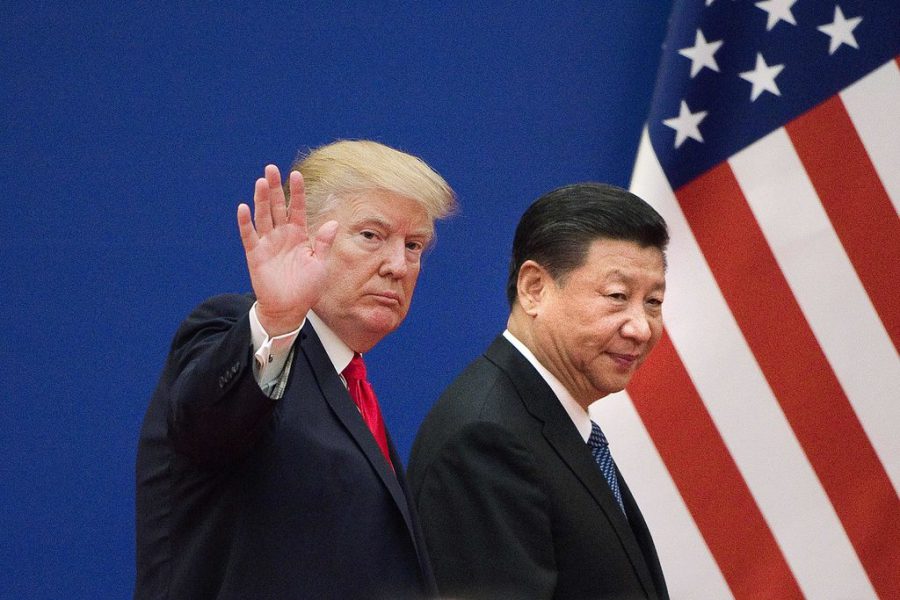May 6, 2019
Trump Imposes New Duty Tariffs on China Ahead of Trade Summit

President Trump and China’s president, Xi Jinping, in Beijing in November 2017. Mr. Trump on Sunday threatened to increase tariffs on $200 billion in Chinese goods on Friday. Credit Nicolas Asfouri/Agence France-Presse — Getty Images
By Ana Swanson and Keith Bradsher
WASHINGTON — President Trump, emboldened by a strong American economy and wary of criticism that an evolving trade deal with China would not adequately benefit the United States, threatened on Sunday to impose more punishing tariffs on Chinese goods in an attempt to force additional concessions in a final agreement.
Mr. Trump, in a tweet, warned that he would increase tariffs on $200 billion in Chinese goods at the end of this week and “shortly” impose levies on hundreds of billions of dollars of additional imports. Dozens of high-level Chinese officials are arriving in Washington this week for what was expected to be a final round of negotiations toward a trade agreement, at least in principle.
Mr. Trump’s threat caught Chinese officials by surprise. On Monday morning in Beijing, they were trying to decide whether Vice Premier Liu He should go ahead with his visit later this week to Washington, said people familiar with the talks who insisted on anonymity because they were not authorized to comment publicly on the negotiations.
President Trump’s tweets come after Chinese officials took a tough line in high-level trade negotiations last week in Beijing, two of the people said. Chinese negotiators said they were reluctant to make any agreement that would require China’s legislature to approve changes to current law. The legislature in March already approved a new foreign investment law that added protections for foreign companies who fear they will be forced to transfer their technology and know-how to Chinese firms, but business groups and Trump administration officials said it didn’t go far enough.
Mr. Trump’s tweet fit a familiar pattern. He has routinely turned to tariffs to help speed negotiations and win concessions from America’s trading partners. The president has already hit Mexico, Canada, Europe and Japan with steel and aluminum tariffs and threatened to impose auto tariffs if they do not acquiesce to demands on trade and other matters. Mr. Trump has already imposed tariffs on $250 billion worth of Chinese goods and is now threatening to tax nearly all of the products China exports to America.
But it remains to be seen whether Mr. Trump’s threat will produce a beneficial trade agreement for the United States — or whether his attempts to pressure China will backfire by pushing already-tense relations past the breaking point. While the United States believes it has leverage over China, huge swaths of the American economy depend on access to the Chinese market for materials, products and sales.
Some of the recent strengthening of the American and Chinese economies — which has helped to quell fears of a possible recession — stems from expectations that the United States and China could soon end their monthslong trade war. Stock markets have recovered on expectations of an agreement and the Federal Reserve chairman, Jerome H. Powell, at a meeting last week, cited “reports of progress in the trade talks between the United States and China.”
The sudden hitch could change that. Asian markets opened broadly lower on Monday. Shares in China were down more than 5 percent in late morning trading.
Treasury Secretary Steven Mnuchin, who made a quick trip to Beijing last week, has expressed optimism about the trade talks, which he said are in “final laps.” And outside advisers to the White House have said a deal is more likely this week than not.
But in a tweet on Sunday, Mr. Trump said talks were progressing “too slowly” and suggested that the Chinese were trying to “renegotiate” the deal. Mr. Trump repeated a threat to raise the rate on existing tariffs to 25 percent and tax $325 billion worth of China’s exports to the United States that aren’t already subject to levies.
For 10 months, China has been paying Tariffs to the USA of 25% on 50 Billion Dollars of High Tech, and 10% on 200 Billion Dollars of other goods. These payments are partially responsible for our great economic results. The 10% will go up to 25% on Friday. 325 Billions Dollars….
— Donald J. Trump (@realDonaldTrump) May 5, 2019
For further reading: https://www.nytimes.com/2019/05/05/business/trump-tariffs-china-trade-talks.html